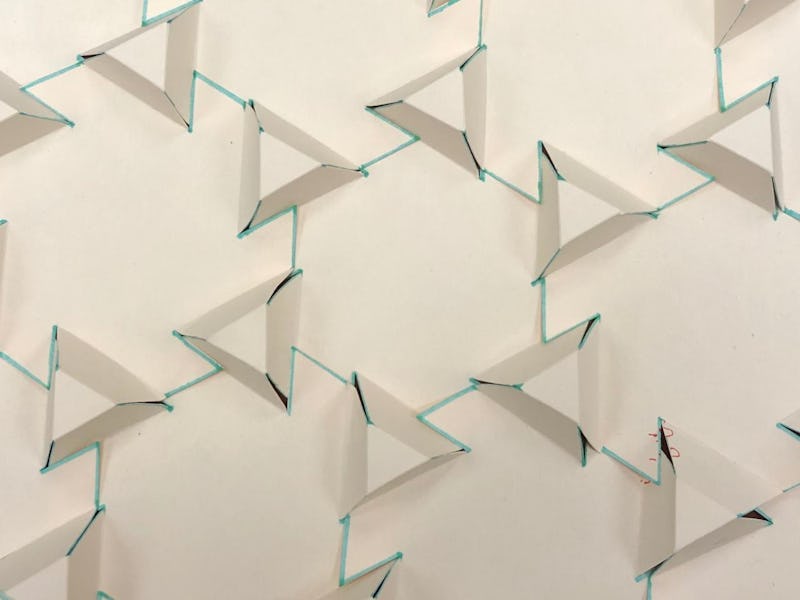Hybrid origami design can hold 14,000 times its own weight
This could change how you build furniture forever.

The hell of constructing flat-packed furniture by hand could soon be a thing of the past, thanks to a new self-locking design technique that can hold thousands of times its own weight.
The design is a hybrid of two well-established Japanese construction methods used in art, architecture, and science: origami and kirigami. While origami is more widely known (think intricately folded paper crane,) kirigami is more common than you might think and differs from origami because it involves the manipulation of the material's surface through cutting and gluing edges together (think cutting out a paper snowflake.) These age-old design tactics have made their way into science labs in recent years and have inspired flexible and strong soft robotics and biomaterial designs. But scientists have now stumbled across a new way to use these methods that uses the best aspects of both to create a stronger final product.
Randall Kamien, coauthor of the study and physics professor at the University of Pennsylvania, said in a statement that this result was totally unexpected.
"Here was this structure that didn't require tape, it had cuts, and it was really strong," said Kamien. "Suddenly, we have this system that we hadn't anticipated at all."
The study, published Tuesday in the journal Physical Review X, explores the potential benefits and limitations of this new hybrid design. The design itself combines the flat-packed, non-adhesive approach of traditional origami with the structural cuts of kirigami -- except there's one catch: in their design, the researchers did not completely cut off or tape down their kirigami cuts, instead they decided to leave these excess flaps in place. Also unusual, but structurally integral to this design, was its slanted walls.
When the team tested this design, which was first realized by the study's first author, visiting PhD candidate Xinyu Wang, they observed that the excess flaps leftover from the partial application of kirigami provided increased strength that wouldn't have existed in a structure that used only one of the methods. More thorough testing, using different grades of paper as well as materials like copper, aluminum and photo films, revealed that the structure's new-found strength was thanks in part to the angle of the walls translating downward force into horizontal compression at the center of the structure as well as the excess flaps pressing together to further dissipate the downward load. Thanks to these structural benefits, the team found that the structure could hold up to 14,000 times its own weight.
The team found that seven copies of the five-pound 'Gravitation' physics textbook could be supported by a single kirigami sheet.
While the team found that aluminum was too brittle to be successfully molded into their geometric structure they found that copper and photo films were pliable enough to achieve the desired shape and strength.
The researchers write that the success of this initial design opens the door to many different possibilities in the future, including strong, lightweight emergency structures and even a new generation of flat-packed furniture.
"Someday, you'll go to IKEA, you fold the box into the furniture, and the only thing inside is the cushion. You don't need any of those connectors or little screws," said Kamien.
Abstract: Traditional origami structures can be continuously deformed back to a flat sheet of paper, while traditional kirigami requires glue or seams in order to maintain its rigidity. In the former, nontrivial geometry can be created through overfolding paper, while in the latter, the paper topology is modified. Here we propose a hybrid approach that relies on overlapped flaps that create in-plane compression resulting in the formation of polyhedra composed of freely supported plates. Not only are these structures self-locking, but they have colossal load-to-weight ratios of order.